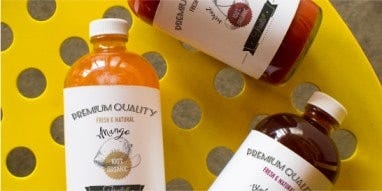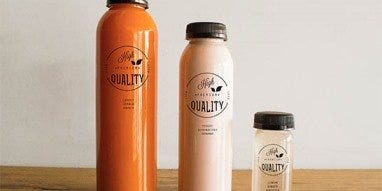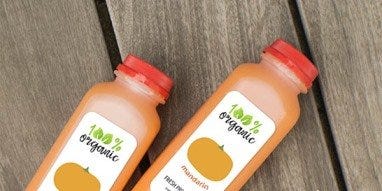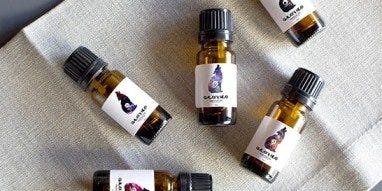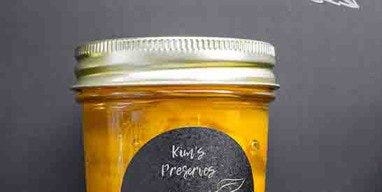A Guide to the Different Types of Recyclable Plastic
Photo: https://pixabay.com/en/plastic-bottles-fishing-net-netting-bott-388679/
Sometimes, it's easy to forget just how common plastic is in our lives. From shopping bags to phones to the carpets we walk on, plastic is everywhere. In fact, between 1964 and 2014, plastic production rose from 16.5 million tons to a whopping 343 million tons. In 2014, Americans threw out 33.6 million tons of that plastic, and only 9.5 percent of that was recycled. It's easy to wonder why that number is so low when all that recycling seems to entail is tossing containers into the recycling bin, but it's actually quite a bit more complicated than that.
Recycling Numbers and What They Mean
Most plastic containers bear a symbol that looks like a triangle made out of arrows, and this symbol exists to let people know that that particular piece of plastic is recyclable. If you take a closer look at that symbol, you'll notice that inside of it is a number. Each number, 1 through 7, indicates a different type of plastic.
The number 1 means that the type of plastic used is polyethylene terephthalate (PET). This particular type of plastic is generally used in soda bottles and peanut butter jars. PET can be recycled into fiberfill that can be used for carpet fibers, rope, pillows, and sleeping bags.
High-density polyethylene (HDPE) is categorized by the number 2. It's a plastic generally found in things such as milk jugs or motor oil bottles. Once it's recycled, this plastic is made into trash cans, traffic cones, flower pots, and a few other items.
Number 3 stands for polyvinyl chloride (PVC). PVC can be found in items like shampoo bottles or cooking oil bottles, and recycled PVC can be turned into drainage pipes.
Considering that there is a high-density polyethylene, it stands to reason that there would also be a low-density polyethylene (LDPE). This type of plastic is classified by the number 4 and is generally found in thinner plastic items like grocery bags and shrink wrap. After it's recycled, it usually becomes more grocery bags.
Number 5 stands for polypropylene. Polypropylene is used when making items such as syrup bottles, straws, bottle caps, and yogurt containers. Once it's recycled, polypropylene can go from holding yogurt to being a case to hold your car's battery.
Polystyrene, number 6, is the foam-like plastic that things like packing peanuts and coffee cups are made out of. Once polystyrene has served its purpose, it can be recycled into items like plastic lumber or flower pots.
Unlike numbers 1 through 6, 7 isn't designated for a specific type of plastic. Rather, it encompasses anything that's left and is classified as "other." Most of the time, plastic bearing the number 7 is a mixture of several kinds of plastic. It's for that reason that this type of plastic isn't normally recycled.
Which Types of Plastic Can and Can't Be Recycled?
It's always a good idea to recycle used plastic products, but which types of plastic can or can't be recycled will vary from place to place. A significant part of the reason for this is that some plastics are harder to sell for reuse, making it cost-prohibitive for waste haulers or municipalities to collect them. The best way to find out which plastics are accepted in your area is to contact your local waste disposal company. Most of the time, this information can also be found on a municipality's website.
One important thing to keep in mind when recycling plastics is that bottle caps aren't necessarily made out of the same type of plastic as the bottle itself, so it's best to dispose of caps separately. Otherwise, they can contaminate an entire batch of plastic at the recycling center.
- Why Are Plastic Bags Bad?
- Recycle Your Plastics
- The Long, Strange Journey of a Plastic Bag
- Why the "Recycling Numbers" Don't Mean Quite What You Think They Mean
- Recycling Plastics Is as Easy as 1,2,3 (4,5,6,7)
- The Truth About Recycling
- Recycling Tip: Plastic Caps, Straws, Utensils
- Chemists Find New Way to Recycle Plastic Waste Into Fuel
- What Happens to All of That Plastic?
- Recycling Plastics
- On the Brink of a Recycling Revolution?
- Reduce, Reuse, Rethink: Remaking Recycling
- Facing the Dirty Truth About Recyclable Plastics
- Plastic Bag Pollution
- Cities and Countries Confronting Plastic Bag Pollution Head-On
- The Truth About Recycling
- Bathroom Recycling
- Bottle Caps and the Enviroment
- Why Can't You Recycle Bottle Caps?
- Bottle Caps Are Bad for Recycling
- This Plastic Can Be Recycled Over and Over and Over Again
- Recycling for Profit: The New Green Business Frontier

